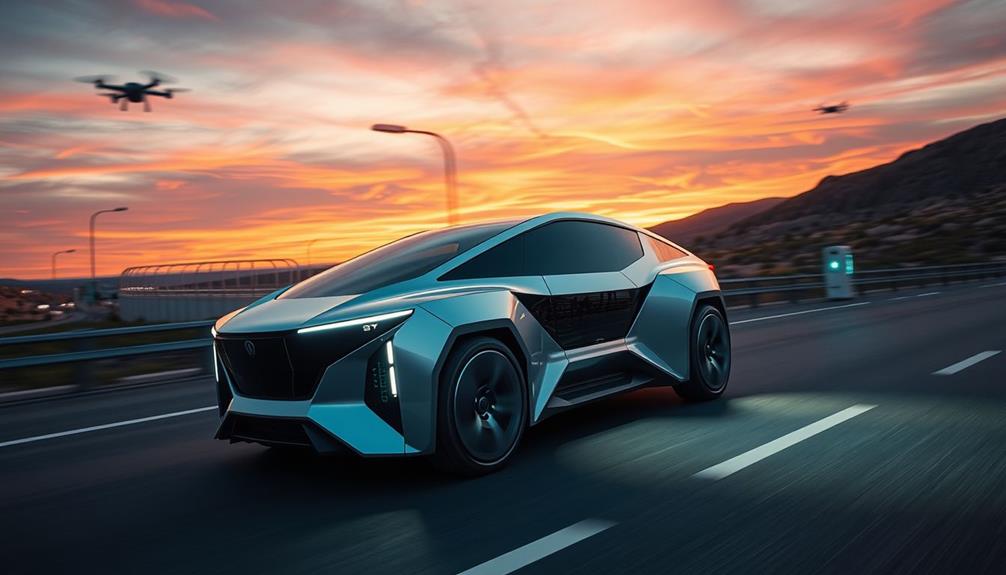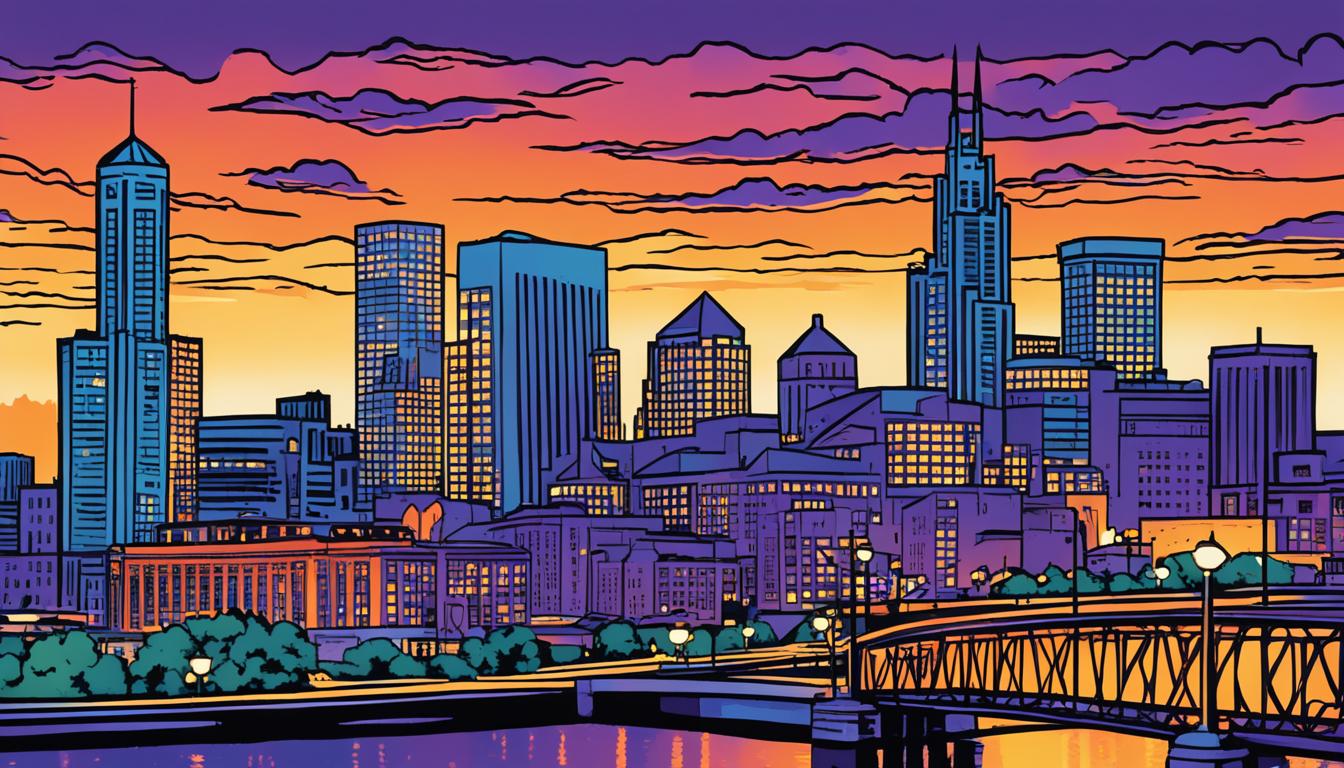The Tesla Cybertruck is more than just a vehicle; it's a radical vision for the future of trucks. Inspired by sci-fi themes, its sharp angles and stainless steel body challenge traditional designs. You've probably noticed its bold aesthetics, reminiscent of iconic films and games. With impressive performance metrics—like a towing capacity of 14,000 pounds and 0 to 60 mph in under 3 seconds—it redefines expectations. Although initial reactions were mixed, pre-orders skyrocketed beyond 2.3 million, showing strong consumer interest. As production ramps up, you'll discover even more exciting updates and innovations linked to the Cybertruck's journey.
Key Takeaways
- The Cybertruck's design combines futuristic sci-fi aesthetics with practical utility, challenging traditional truck norms.
- Its stainless steel body features sharp angles and a bullet-resistant exoskeleton, emphasizing radical design freedom.
- Performance capabilities include dual and tri-motor configurations, towing up to 14,000 pounds, and acceleration from 0 to 60 mph in under 3 seconds.
- Despite initial skepticism, pre-orders exceeded 2.3 million, reflecting strong consumer interest and enthusiasm within the Tesla community.
- Mass production is slated for 2025, with a near-production model unveiling set for November 30, 2023.
Musk's Vision for the Cybertruck
Elon Musk's vision for the Cybertruck is a bold departure from traditional truck designs. Driven by his dissatisfaction with conventional aesthetics, Musk sought to create an electric vehicle that embodies a unique identity. Inspired by his son Saxon's question about the future, he aimed to craft a vehicle that truly looks like it belongs in a sci-fi world.
The Cybertruck's stainless steel body allows for sharp angles and straight planes, giving it an unconventional aesthetic that stands out on the road. This innovative design approach could also be likened to how AI enhances threat detection, as both challenge existing paradigms and redefine expectations in their respective fields.
Musk's design language challenges norms, as he analyzed established trucks like the Chevy Silverado to redefine what a modern truck could be. The production version of the Cybertruck reflects this reimagined vision, pushing boundaries in both form and function.
Musk envisioned a vehicle that feels like it's been plucked from a cyberpunk film, blending futuristic design with practical utility.
In essence, the Cybertruck isn't just about transportation; it's a statement. By merging innovative materials with a striking design, Musk has set the stage for a new era in electric vehicles, where ordinary expectations are left far behind.
Design Inspirations and Influences

The Cybertruck's design draws heavily from sci-fi aesthetics and video game visuals, creating a futuristic and unconventional appearance that captures attention.
Elon Musk's vision likened it to a cyberpunk vehicle, drawing inspiration from iconic films like Blade Runner and vehicles such as the DeLorean and RoboCop. You can see how the design team contrasted traditional trucks, like the Chevy Silverado, to redefine the expectations of truck design. This innovative approach mirrors the creativity found in the entertainment industry, where dynamic projects showcased push boundaries and challenge norms.
The use of stainless steel in the construction allowed for radical design freedom, resulting in the Cybertruck's sharp angles and straight planes.
This innovative approach moves away from the typical curves you'd expect in conventional trucks. Its unique unibody construction further enhances its distinctive look, emphasizing a solid, cohesive structure.
Notably, the Cybertruck features a bullet-resistant exoskeleton, reinforcing its bold design choices.
This combination of sci-fi influences and cutting-edge materials sets the Cybertruck apart from anything else on the road. You can't help but notice how these elements come together, creating a vehicle that's not just a truck but a statement of what the future of automotive design can look like.
Performance and Technology Updates

Tesla's Cybertruck boasts impressive performance and cutting-edge technology that redefine what a truck can do. With dual and tri-motor configurations, you'll enjoy a staggering towing capacity of up to 14,000 pounds. When you activate "Beast Mode," the Cybertruck accelerates from 0 to 60 mph in under 3 seconds, proving that electric vehicles can deliver thrilling performance.
Additionally, its advanced aerodynamics, with a drag coefficient of 0.335, enhances overall efficiency, similar to how solar panel efficiency varies by type.
Tesla continually improves its technology; the Cybertruck now features the updated Full Self-Driving (FSD) capabilities with version 12.5.1.4. This upgrade guarantees compatibility with Hardware 3, greatly enhancing overall performance thanks to data collected from other HW3 vehicles.
One of the standout features is its bidirectional charging capability, known as Powershare. This allows you to power tools and devices directly from the vehicle, making it perfect for work sites or camping trips.
Plus, with a maximum charging rate of 250 kW, you can add approximately 128 to 136 miles of range in just 15 minutes.
The Cybertruck's advanced aerodynamics, with a drag coefficient of 0.335, further enhances its performance and efficiency, ensuring you get the most out of every drive.
Market Reactions and Community Feedback

Initial reactions to the Cybertruck were mixed, with many expressing skepticism about its unconventional design and commercial viability. Critics questioned whether its bold aesthetics could resonate with mainstream consumers.
However, pre-orders quickly proved the doubters wrong, surpassing 2.3 million, signaling significant consumer interest despite initial hesitations. This interest mirrors the careful evaluation that investors should undertake when exploring options, such as avoiding Gold IRA scams to guarantee they make informed decisions.
The Tesla community remains enthusiastic, especially about updates on Full Self-Driving (FSD) capabilities.
With ongoing performance improvements, many are optimistic that future iterations of FSD will enhance the vehicle's appeal. This excitement highlights Tesla's innovative reputation, as fans keenly await advancements that could redefine the electric vehicle market.
Future Developments and Production Timeline

As production gears up for the highly anticipated Cybertruck, significant updates are on the horizon. The initial rear-wheel drive version, priced at $39,900, has been scrapped in favor of dual-motor variants. Elon Musk said that mass production is now expected to start in 2025 due to design changes and market conditions. The revelation of the near-production model is set for November 30, 2023, at 3:00 PM EDT, paving the way for customer deliveries shortly after.
Here's what you can expect:
| Key Milestones | Details |
|---|---|
| Unveiling Event | November 30, 2023 |
| Initial Production Batch | At least 25 Cybertrucks |
| Customer Allocations | 10 first Cybertrucks |
| Software Update Plans | Ongoing post-launch updates |
| Market Feedback Integration | Reflecting consumer needs |
The global pandemic has delayed timelines, but Tesla's commitment to innovation remains strong. With the Model Coming soon, you can anticipate continuous software updates and improvements based on user feedback, ensuring the Cybertruck evolves to meet your expectations.
Conclusion
In the end, the Cybertruck isn't just a vehicle; it's a bold statement, like a lightning bolt striking a quiet landscape. As you watch its angular silhouette cut through the night, you realize Musk's vision has transformed into reality. With each update and community reaction, this electric beast is gearing up to revolutionize the roads, proving that innovation can be as fierce and unapologetic as a storm. The future's charging ahead, and you won't want to miss it.









